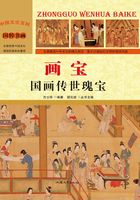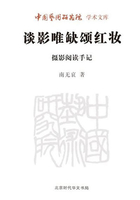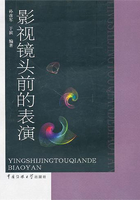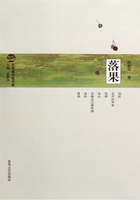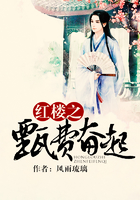Suzan-Lori Parks(1964— ),the first African American woman writer to win the Pulitzer Prize for Drama,has been widely recognized as the most challenging and experimental dramatist among her peers.Her plays are distinguished for historical allusions and innovative dramaturgy.Since she created the first play The Sinner's Place(1984)for the senior project at Mount Holyoke College,Parks has created more than ten plays,one novel,some radio plays and screenplays,and even musical scripts.[1]
In addition to the Pulitzer Prize for Topdog/Underdog in 2002,Parks has been awarded two Obie awards,[2]a Tony nomination,another Pulitzer Prize nomination,a MYM50,000 Alpert“mid-career”award,National Endowment and Guggenheim fellowships,Ford and Rockefeller Foundation grants,and the MacArthur Foundation's whopping MYM500,000“genius”grant.With a number of prizes and handsome bonuses,Parks' literary status as an ingenious dramatist in the circle of contemporary American drama has hardly been challenged.
As an avant-garde dramatist,Parks has inevitably evoked some bitter criticism.Her detractors contend that her works are“extremely difficult and esoteric”(Brown-Guillory 39).However,Parks' innovation in both form and content has been embraced by many critics.She is highly esteemed as“some rare kind of witchcraft genius”(Louis 141)and“year's most promising playwright”.[3]Laurence Maslone even claims that Parks is sufficiently qualified to pull American theatre out of“the doldrums,or maybe the abyss.”He remarks,“Her voice has already made a difference on our stage.… If we can't hear her,there's nothing wrong with her voice,just something wrong with our ears”(Munk 33).Alisa Solomon best sums up her works,“Though it is so abstract in form and language as to make any attempt at interpretation provisional at best,it is,at the same time,clearly and firmly rooted in a forthright political sensibility,one absolutely concerned with African-American experience under the weight of a hostile world”(Solomon 73).
Parks' great success lies in her obsession with the matter of history and her ingenious theatrical representations of history.Realizing the absence of African Americans from American history,she engages herself in historical rewriting.Her rewriting does not mean positing a new edition of history; instead,she revises bits and pieces of the grand narratives that are recorded in the official historiography by repeating the historical events.In this way,Parks makes her version of history and leaves an African American imprint on American history.
1 Parks' Dramatic Creation
As for African American writers,history is a recurrent theme in their works,because“[their]past is absent or it's romanticized,[and]this[American]culture doesn't encourage dwelling on,let alone coming to terms with the truth about past”(Gilroy 179).Attempting to fill in the void of their history,the black writers either excavate the buried experiences excluded from the white historiography or retell the known stories from a new perspective.Kimberly W.Benson states that“all Afro-American literature may be seen as one vast genealogical poem that attempts to restore continuity to the ruptures or discontinuities imposed by the history of the black presence in America”(Gates 123).
In Parks' view,(the black)history is“A Great Hole,”[4]metaphoric of an absence,a gap and a grave.Parks once explained the connection between the symbolic meanings of the“hole”and her dramatic creation,“You can riff off the word,you can think about that word and what it means and where it takes you.…You think of h-o-l-e and then w-h-o-l-e and then black hole,and then you think of time and space and when you think of time and space you think of history”(Pearce 46).Parks' deliberate conflation of the word“hole”with its homophone“whole”suggests that the whole(continuous and coherent)history made by the white oppressors means an empty hole for the black oppressed.About this,Elizabeth Brown-Guillory comments,“As long as Blacks are relegated to the‘hole'(‘absence')of history,the possibility of wholeness becomes limited”(Brown-Guillory 184).Mary F.Brewer expresses the similar idea by stating that:
The hole symbolizes the erasure or distortion of Blacks in White historical narratives.It reflects too the practice of denying African Americans a recognizable U.S.parentage,so that,as orphans,Blacks do not inherit the same privileges as the nation's White descendants.What they inherit instead Parks calls“The Great Hole of History.”(Brewer 165)
Parks believes that the“history of History”is akin to the history of American literary canon,for both of them are always“in question”(Parks“Possession”4).Regardless of the great contribution African American writers have made,their names have been largely erased from the list of the literary canons.Likewise,black history has been plucked from American history,even though it constitutes an important part of the national history of the United States.
Parks is not the first writer to compare the national history to“a hole.”Prior to her,Neil Bissoondath[5]claimed that“the past[of Caribbean history] amounts to no more than a ‘big,black hole'”(Boehmer 188).However,different from Bissoondath's pessimistic attitude,Parks views the hole not only as a grave site where black history is buried,but also a repository of the stories of black ancestors.This idea inspires her to“force a new kind of archaeological practice,a new way of ‘digging' the past to look at the world”(Geis 163).Concerning her opinion of the past or history,Parks says,“It's history that you don't know what to do with or history that's hiding in the shadows or is being pushed to the edges,or its in the margins,the gaps and the crevices.It's not the big story,it's the fringe stuff.Particles of things.Writing for me is so much like archaeology”(Savran 96).
The“(w)hole”idea spurs Parks to take up the work of historical reconstruction.In her dramatic creations,Parks employs imaginative fabrication to illuminate the blind spots the white historiographers have shadowed intentionally.She contends,“Where is history?Because I don't see it.I don't see any history out there,and so I've made some up”(Pearce 46).She even jokes that her stories always go in this way,“‘Once upon a time you weren't here.' You weren't here and you didn't do shit!And it's[history is]that,that fabricated absence”(Drukman 296).
As an ingenious dramatist,Parks declares that theatre is the most instrumental medium to fabricate or make history.She has found some affinity between theatre/drama and historical reconstruction.In her view,
A play is a blueprint of an event:a way of creating and rewriting history through the medium of literature.Since history is a recorded or remembered event,theatre,for me,is the perfect place to“make”history—that is,because so much of African American history has been unrecorded,dismembered,washed out,one of my tasks as playwright is to — through literature and the special strange relationship between theater and real life — locate the ancestral burial ground,dig for bones,find bones,hear the bone sings,write it down.(Parks“Possession”4)
Furthermore,Parks looks upon theatre as an ideal site to re-member history.By restaging history,she recuperates the dis-remembered(forgotten)history and restores people's memory of the past.Deborah Geis points out that Parks does well in playing on the tropes of remembering/re-membering and dis-re-membering/dis-membering.In her plays,“dis-membering”not only means cutting off limbs of a person,which invokes the dark history of lynching,but also means dissociating a person from his/her membership of a community or society,which is related to the dispossession of membership,identity and history of black people(Geis 11).In addition to the punning meanings,“dis-membering”signifies all the things that have been forgotten.With the multiple connotations,the motif of“dis-membering”haunts Parks' plays.For example,in Venus,the body of The Venus/Saartjie Baartman was anatomically dissected by the white anatomist.In The Death of the Last Black Man in the Whole Entire World,Black Man with Watermelon experiences multiple death executions and gets confused about his fragmented body and identity.In The America Play,the Foundling Father suffers metaphoric deaths in the repeated reenactments of President Lincoln's assassination.These figures not only suffer the pain of being physically dismembered,but also suffer the spiritual trauma as the consequence of their dis-membered experiences.Therefore,Parks tries to re-member these black victims by means of restaging their embodied experiences.She once said,“I'm remembering and staging historical events which,through their happenings on stage,are ripe for inclusion in the canon of history”(Parks“Possession”5).
Since theater is a perfect site to re-member the dis-membered black history,Parks performs her archeological practice onstage,the most“recognizable SLPisms.”[6]Her archaeological practice is a three-step process,including“digging for bones,hearing the bones sing,and writing it down”(4).Her first step is to dig out the remains left by the deceased ancestors(including bones,private properties and stories).Correspondingly,the motif of digging and images of digger run through most of her plays.In Venus,The Negro Resurrectionist digs out the corpse of The Venus/Baartman and makes her resurrected.In The America Play,the Foundling Father,a grave digger by trade,responds to the call of dead Abraham Lincoln by digging“The Great Hole of History.”And Brazil,the Foundling Father's son,digs out his father's corpse and his possessions from the same great hole.For both Parks and her characters,the act of digging reveals their desire for seeking,perceiving and transferring their forefathers' legacy.
The second procedure of Parks' archaeological practice is“hearing the bones sing.”This procedure is accomplished by the resurrection of the dead who are allowed to“sing”or tell their stories to the living.Conjured up by Parks' metaphoric spells,black ancestors get resurrected from the buried past and bring their experiences to light,especially the pain and sufferings that were once unspeakable or unspoken.In addition to Baartman/The Venus in Venus,the ghost of Black Man with Watermelon along with the ghost chorus in Death and the ghost seers in Imperceptible Mutabilites in the Third Kingdom demonstrate the ghostly dimension of Parks' plays.Together with their stories,these historical figures get out of the shadow of the margin and come to the center of the stage to perform history,becoming the leading roles on stage.
For Parks,“hearing the bones sing”is far more than listening to the stories of ancestors.It is a complicated process of theatrical fabrication of black history indeed,since“their[the ancestors']song is a play”(4).In the process of making a new version of black history,Parks has to deal with racial issues;however,she refuses to highlight the racial conflicts.She insists that the black drama should not be equated with race drama.Irritated by the label of an ethnical writer,Parks defends herself in these words,“Can a White person be onstage and be other than oppressed? For the Black writer,are there Dramas other than race dramas? Does Black life consist of issues other than race issues?”(Parks“Equation”21)After a series of questions against the racial theme in the black drama,she firmly proclaims her reflections on the issues of black people's existence,“There is no such thing as THE Black Experience;that is,there are many experiences of being Black which are included under the rubric.Just think of all the different kinds of African peoples”(21).She even employs mathematical equations and reasoning to illustrate what a black play should be and what it shouldn't be.She writes:
BLACK PEOPLE +“WHITEY”=STANDARD DRAMTIC CONFLICT (STANDARD TERRITORY)
i.e.
“BLACK DRAMA”= the presentation of the Black as oppressed
so that
WHATEVER the dramatic dynamics,they are most often READ to EQUAL an explanation or relation of Black oppression.This is not only a false equation,this is bullshit.
so that
BLACK PEOPLE + ⅹ =NEW DRAMTIC CONFLICT
(New TERRITORY)
Whereⅹis the realm of situations showing African-Americans in states other than the Oppressed by/Obsesses with“Whitey”state;where the White when present is not the oppressor,and where audiences are encouraged to see and understand and discuss these dramas in terms other than that same old shit.(20)
Obviously,Parks neither confines her concern to the racial issues nor creates the plays“in which the black people just feel good and the white people are just‘mea culpa-ing”(Munk 34).On the contrary,she takes efforts to represent various experiences of black people and encourages the audience to think more about the social realities,not merely race.
Aiming to turn the“song(s)of the dead”into the plays,Parks employs various dramatic strategies.In Death,she adopts the ghost play and creates a surrealist world on stage.The dead come back to life and offer“a collective voice speaking for a people and its experience in broad mythic tones and incantatory rhetoric”(Malkin 157).In Venus,Parks resets Baartman,a stereotypical image of Other[7],in her own historical context.In this way,Parks examines the mechanism of the historical discourses that defined Baartman as“The Venus Hottentot”and challenges the black stereotypes the white culture has molded.The America play is not a historical play in the traditional sense,but it refers to the repetition and revision of the historical event of President Lincoln's death.Moreover,it is filled with images of holes and digging.For this reason,The America play can be also viewed as a historical play“in the sense of attempting to ‘locate the ancestral ground,dig for bones,find the bones,hear the bones sing,write it down'”(Thompson 167).These plays go beyond the repetition of the racial conflicts and represent multiple black experiences,through which the audience can hear the dead sing.
The final procedure of Parks' archaeological practice is to write down the songs of the dead.By writing,Parks is able to transform her reconstructed version of history into dramatic scripts.However,she never attempts to establish the fixed connections between words and meanings; instead,she endows her scripts with uncertainties and ambiguities.When the scripts are acted out onstage,the written texts are performed in a dynamic way.Moreover,whenever the original play is reenacted,the songs of the resurrected ancestors would be heard(or watched or felt)in another different way,resulting in the audience' s various interpretations of the history performed onstage.For Parks,“theater does not simply re-write history,it enacts,re-enacts it,and demands continual re-enactment”(Wetmore 89).In this way,black history is represented in the dynamic circulation among the written scripts,enactments and reenactments.
Working as a“playwright-resurrectionist”(Sellar 52),Parks adopts the resurrected figures,the retold stories and the reenacted performances to reconstruct black history.Meanwhile,she marks her plays with dissociation from the traditional plays that are characteristic of realistic characters,progressive plots and linear structure.Parks claims that contemporary American plays are mired in a real crisis and most of them follow“an insidious,tame-looking,schmaltz-laden mode of expression that threatens to cover us all,in our sleep”(Parks“Elements”6).What is worse,the audience is blindly engrossed with this sort of“theatre of Schmaltz,”and takes great pleasure in“stating some point,tugging some heartstring,or landing a laugh,or making a splash,or wagering a finger”(6).Instead of such a depthless circle of drama,Parks tries to make change and move forward.
Among her innovations,Parks' exploration of the dramatic form is first and foremost.As far as Parks is concerned,form and content is the same thing.About this,she argues:
[…]Content determines form and form determines content;that form and content are interdependent.…[Form]is an integral part of the story.… The form is not merely a docile passive vessel,but an active participant in the sort of play which ultimately inhabits it… I don' t explode the form because I find traditional plays“boring”— I don't really.It's just that those structures never could accommodate the figures which take up residence inside me.(8)
Parks grounds her formal innovation on the aesthetics of Rep&Rev(short for Repetition and Revision).She explains that she borrows the Rep&Rev strategy from Jazz music,in which the performer plays a musical phrase over and again,but makes a slight revision with each repetition.In her essay“From Elements of Style,”Parks elucidates how this tactic fits into her dramatic cre-ation:
First,it is not just repetition,but repetition with revision.And in drama,change is the thing.Characters refigure their words.Secondly,a text based on the concept of repetition and revision is on which breaks from the text which we are told to write —the text which clearly ARCS.Thirdly,[…]In such plays we are not moving from A → B but rather,for example,from A → A → A → B → A.Through such movement we figure A.And if we continue to call this movement FORWARD PROGRESSION,which I think it is,then we refigure the idea of forward progression.(9-10)
Parks' constructive power of repetition and revision on the characters' language is conspicuous.In her plays,Rep & Rev define and constitute her poetic language through what Henry Louis Gates coins“Signifyin(g).”“Signifyin(g)”is a mode of African American figurative language,which describes the connection between black vernacular and Standard English.The word“Signifyin(g)”itself is featured in African American vernacular,which is opposite to“signifying”in Standard English.“Signifying”denotes the ultimate meaning of the word,while“Signifyin(g)”denotes the ways of complicating or deferring the meanings of the word,in which black vernacular repeats and revises Standard English by transforming and displacing the process of“signifying.”In this way,“Signifyin(g)”functions as a mediator to negotiate these two linguistic discourses,and African American English thus becomes double-voiced.Using African American English,black writers who are oppressed by Standard English turn it into a medium of self-expression by repeating and revising it.In addition,the double-voicedness of African American English is emblematic of a paradoxical conflation of the historical absence and the historical presence.In this sense,black vernacular and its relevant black history were not entirely erased,but still exist in the shadow of Standard English.Once it is animated,black vernacular will become a powerful tool to challenge the authority of white oppressors.Therefore,for African Americans,“Signifyin(g)”not only serves as a linguistic strategy,but also carries some sort of historical consciousness and political agenda.
It is“Signifyin(g)”of African American English that shapes the complexity of Parks' dramatic language.Parks manipulates a variety of word plays dexterously,such as puns,malapropisms and rhymes,in order to“shift the ground of the world within her words,tugging on the tension between‘Standard American English' and black vernacular”(Solomon 76).By applying black vernacular into her dramatic scripts and making it animated thorough the theatrical performances,Parks performs the practice of Signifyin(g) on the Signifyin(g).Concerning this,she remarks:
So how do I adequately represent not merely the speech patterns of a people oppressed by language(which is the simple question)but the patterns of a people whose language use is so complex and varied and ephemeral that its daily use not only Signifies on the non-vernacular language forms,but on the construct of writing as well.If language is a construct and writing is a construct and Signifyin(g)on the double construct is the daily use,then I have chosen to Signify on the Signifyin(g).(Solomon 75-76)
In parallel with the repetition and revision at the level of language,the revised repetition of the dramatic scenes,situations and motifs constitute the dramatic structure of Parks' plays.For example,in Imperceptible Mutabilities,the images of African Americans who were trapped in the Middle Passage are repeated and revised in the four different scenes,representing the traumatic memory and double-consciousness(W.E.B.Du Bois's term)[8]of black people.In Venus,the repetition and revision of the act of looking or watching defines a black female body as a public spectacle and an object of the white spectators' voyeuristic gaze.In The America Play,the repetition and revision of the ritual enactment of shooting President Lincoln represents the theatrical fabrication of the Lincoln myth and the playfulness of history.In this way,Rep & Rev construct the structural framework of the play,and the dramatic climax is reached through the“accumulated weight of the repetition”(Parks“Elements”10).With the repeated revision of the language,images,and specific situations,Parks' plays offer“great space of simultaneous[black] experience”(Fuchs 48).Through enacting or reenacting the historical events that have been circulated in the public sphere,Parks produces new understandings of the established cultural icons and addresses contemporary American cultural inquiry into both race and history.
2 Literature Review of Parks' Drama
Oddly enough,Parks study is not fruitful,especially compared with her peers,such as August Wilson(1945—2005),even though she has been honored as the best American dramatist since the year of 2000.Up to now,there are only two academic monographs on her works.Deborah R.Geis's book Suzan-Lori Parks provides an in-depth analysis of Parks' major plays,and explores the themes(such as dis-membering,historical reconstruction and resurrection)and dramatic devices(like spells,rests,Rep&Rev strategy)in her plays.Geis argues that Parks' historical reconstruction is always related to the archaeological practice of digging,re-membering the dis-membered history,and resurrecting the dead.Indeed,his comments on Parks' plays contribute much to this book.For example,in“Choral Explorations of Race and Politics,”Geis states that Parks' use of multi-layered,choral structures and Rep&Rev strategy endows Imperceptible Mutabilities and Death with great charm in performance on the one hand,but makes the textual scripts tough to read on the other hand.In“Anatomizing Venus,”Geis regards Venus as a play which involves images of remembering and re-membering(putting the pieces back together),of dis-re-membering(forgetting)and dis-membering(taking apart).Rather than obsessively mourn The Venus as a victimized heroine,Parks guides the audience to experience the desire of the gaze along with the racist and colonial practice in The Venus/Baartman's age.In“Resurrecting Lincoln,”Geis makes detailed analyses of Parks' two plays,The America Play and Topdog/Underdog.He concludes that Parks tactfully combines the historical event of President Lincoln's death with the theatricality of performance.
Jeniffer Larson's Understanding Suzan-Lori Parks is the second monograph on Parks.In the book,Larson explores Parks' aestheticism of(re)vision and defines it as“both a seeing again and a wholly new seeing”(4).She contends that Parks revises some historical events and classic literary texts,which guides the audience to see and experience history again.The book is divided into eight chapters,three of which provide some help for my book.In Chapter One“‘Three-ness' and ‘the Space in Between': Imperceptible Mutabilities in the Third Kingdom and The Death of the Last Black Man in the Whole Entire World,”Larson argues that black people are not haunted by“double consciousness,”but a“three-ness,”or“triple consciousness.”In Chapter Three,“‘Deliberate Calculation' in Money,Sex and Black Plays:Venus,”Larson recuperates the historical context Baartman lived in and draws a conclusion that Baartman/The Venus possesses limited agency to make“delicate calculation.”In Chapter Five,“Folding and Unfolding History,or Identity Fabrication: The Lincoln Plays,”Larson examines the fluidity and superficiality of black's identity,especially its connection with familial history and national history.The identity shift of the characters is embodied in the change of clothes or costumes.
Added to Geis's and Larson's monographs on Parks are three collections of essays.Suzan-Lori Parks: A Casebook,jointly edited by Kevin J.Wetmore Jr.and Alycia Smith-Howard,consists of nine essays.This book benefits from four of them.Heidi J.Holder,in“Strange Legacy: The History plays of Suzan-Lori Parks,”claims that Parks embraces the heritage of the deceased ancestor and employs Rep & Rev strategy,numbering and counting to derange the historical order(18-28).Harvey Young's“Choral Compassion: In the Blood and Venus”examines Parks' use of choruses in Venus and In the Blood.He points out that Parks inherits the traditions of choruses in the Greek tragedies to tell stories and build a bridge for the audience(29-47).Kevin J.Wetmore Jr.,in“Re-enacting: Metatheatre in thuh Plays of Suzan-Lori Parks,”states that Parks' drama can be viewed as reenactment of a new history,rather than re-enactment of history.In addition,Wetmore demonstrates the metadramatic features of Parks' plays,including costumes,make-up and a play within the play.By means of metatheatre,Parks“presents a multitude of blacks performing on stage,creating new identities,no longer reliant upon the presence of whites to define themselves”(107-123).“In Digging Out of the Pigeonhole:African-American Representation in the Plays of Suzan-Lori Parks,”Andrea J.Goto asserts that Parks goes beyond the feminist and antiracist positions,treating the ideas such as“whiteness”and“blackness,”“truth”and“fiction,”“malleable dynamic concepts rather than fixed ones,”thus“exposing the layers that compose an African-American identity and challenging her audience to rethink racist assumptions and in its place see the human experience”(108).Correspondingly,her characters dismantle the ethnic essentialism and present how“blackness”is defined(106-123).
Suzan-Lori Parks:Essays on the Plays and Other Works,the second collection of essays,is edited by Philip C.Kolin.This collection is made up of twelve essays,two interviews and a review of the production history of Parks' works.One of the essays offers an inspiring idea to this book.Rena Fraden,in her eassay“Everything and Nothing:The Political and Religious Nature of Suzan-Lori Parks' ‘Radical Inclusion',”states that the idea of“radical inclusion”structures Parks' works.Fraden claims that all Parks' plays and her characters are intertextually or hypertextually connected with historical texts and literary traditions.Politically and religiously,Parks refuses essentialism and swerves her politics and religion from the particular event to the universal.The essay concludes that Parks' plays overflow national,racial and religious borders(22-23).
Suzan-Lori Parks in Person: Interviews and Commentaries,jointly edited by Philip C.Kolin and Harvey Young,consists of twenty-three interviews and commentaries.These essays cover a time span from 1992 to 2013,presenting a trajectory of Parks' writing career and providing readers with the first-hand materials of her idea of race,history,culture and dramatic creation.There are two advantages of these essays.First,they are offered by the persons who work with Parks.Second,they focus on both Parks' textual scripts and theatrical performances.Equipped with these materials,readers are able to gain access to“watching and hearing”Parks in person.
In addition to the monographs and collections of essays mentioned above,there are varied sporadic reviews of Parks' plays in academic journals and newspapers.Among them,the criticism of Parks' reconstruction of black history takes up a large proportion,concerned with the motif of history and her dramatic representations of history.The themes of history are multi-dimensional,including historical trauma,historical memory,historical legacy,and historical discourse.The following are the representative reviews.Debby Thompson's essay“Digging the Fo'-fathers:Suzan-Lori Parks' Histories”sketches out Foucaultian archeological and genealogical readings of The American Play and Venus.By analyzing the multi-layered meanings of the word plays in the former play,Thompson unearths that American history is filled with“faux”knickknacks and lies.In Venus,he makes it clear that the play is a display of discourses on the black race through colonization,religion,medicine,and consumption(167-184).Jeanette R.Malkin's“Suzan-Lori Parks and the Empty(W)hole of Memory”explores how Parks summons the lost black history and seeks the identity of black people through an appeal to remembering and forgetting.In Malkin's view,Parks' postmodern concept of time and space,her adoption of the multi-directional narrative structure and use of black vernacular work for the motif of“memory,”which is loose,flowing and unfinalized.Through memory,Parks creates a collective voice speaking for black people and their experiences(155-182).Similarly,Elizabeth BrownGuillory's“Migration,Memory,and(Re)Membering in Suzan-Lori Parks' Plays”also examines the racial memory and its reference to the migration of African Americans.Brown-Guillory states that Parks attributes the strains of the Black life in a hostile world to the Black experience of making the Middle Passage.Confronted with the forgotten black history,Parks involves herself into exploring the synergies between the racial memory and remembering black people(183-197).
About Parks' dramatic strategies,nearly all the relevant reviews focus on either her aestheticism of Rep&Rev or her linguistic strategy of“Signifyin(g).”Among them,the oft-quoted review is Alisa Solomon's article“Signifying on the Signifyin:The Plays of Suzan-Lori Parks.”In the article,Solomon points out that Parks employs the strategy of“Signifying on the Signifyin”to expose the dynamics between the black and the white worlds,reality and representa tion,language and theatre.In this way,she theatrically incarnates the double consciousness of African Americans(73-80).
Besides the articles about the motif of history and dramatic representations in Parks' plays,there are some essays on the case study of one of her plays.The studies of Death are very scarce,possibly because of its highly experimental style.Alice Rayner and Harry J.Elam Jr.'s essay“Unfinished Business:Reconfiguring History in Suzan-Lori Parks' The Death of Last Black Man in the Whole Entire World”explores Parks' ways of reconfiguring black history.The authors of this essay contend that the history in Death is acted out at the level of signifiers.On the level of language,Parks employs African American vernacular and its materiality of the linguistic signifiers(spelling,sound,and gesture)to destroy any written texts of representation.Furthermore,the authors comment that the play demonstrates Augustinian notion of the threefold present and that the ghost figures embody the lived experiences of all African Americans in the past,at present and in the future(447-461).Louise Bernard's essay“The Musicality of Language: Redefining History in Suzan-Lori Parks' The Death of the Last Black Man in the Whole Entire World”discusses Parks' use of blues/jazz motif,which allows her to“explore in greater depth the ontological resonances of African retentions”and redefine history via its meta-discourse of signification(688).Moreover,Bernard contends that Parks takes control of the power of sound and image of African American vernacular and treats it as a site of resistance,even though half of it is constituted by the hegemonic language of the dominant culture (687-698).Soycia Diggs Colbert,in her lengthy essay,“‘When I Die,I Wont Stay Dead':The Future of the Human in Suzan-Lori Parks' The Death of the Last Black Man in the Whole Entire World,”adopts the“thing theory”to examine the materiality of the blackness and how it works to diminish black people.Meanwhile,Colbert argues that obscuring the body not only operates to enact a rupture between the spoken word and the bodily action,but also reorients Black Man's relationship to time.Time in this play is thus disrupted and reconfigured(191-220).
With respect to Venus,the play has received both opprobrium and approval.The critics who chide Parks in betraying the historical authenticity attempt to elucidate how far she strays from the real story of Saartjie Baartman and to what extent she satisfies the expectation of the white audience.Among them,Jean Young is considered as the harshest critic,who has directed the most vehement criticism at Parks.In her essay“The Re-objectification and Re-commodification of Saartjie Baartman in Suzan-Lori Parks' Venus,”Young adopts a historicized reading of Baartman's life and accuses Parks of violating the authenticity of the historical events by portraying Baartman as a conspirator with the white oppressors.She contends that Parks' mythic reconstruction of Baartman makes a black female victim of racial oppression re-objectified and re-commodified,catering to the taste of the white audience(699-708).Shawn-Marie Garrett agrees with Young,and her article“Return of the Repressed”reveals the similar idea that Parks works ineffectively in challenging the stereotypes of the black women(26-43).
Opposite to Jean Young and Shawn-Marie Garrett,Michele Wallace,in his essay“The Hottentot Venus,”suggests that there is no the subtlest criticism of racialism and colonialism in Venus.He points out that the play covers a wide range of divergent and unexplored discourses,such as representations of the stereotypes of black people in the Western culture and the black female body formed by colonial and racial power(31).Greg Miller,in his essay“The Bottom of Desire in Suzan-Lori Parks' Venus,”explains that Parks' vague attitude towards Baartman results in an intentional ambiguity(125137).Concerning the ambiguity and spectatorship,Karen Ruth Kornweibel,in his essay“Race,Spectacle,and Complicity in Suzan-Lori Parks' Venus,”further examines the complexity of the play.Kornweibel claims that the play provides an unflinching portrayal of the intersection of power,race,and spectacle in representation of Baartman and that this portrayal would spur the audience to realize their complicity in victimizing Baartman(64-81).Following Kornweibel,Ilaria Oddenimo,in her essay“‘I wanna Love Something Wild':A Reading of Suzan-Lori Parks' Venus,”not only states that Parks tactically exposes the complex dynamics of attraction and repulsion aroused by The Venus,but also argues that Parks represents Baartman in the lens of African American sensibility and succeeds in creating a decolonized narrative which represents nothing but Parks' own existence as a woman.In this way,the real Baartman becomes“a projection of how the playwright could imagine herself within Baartman's narrative”(121-135).
Harry J.Elam Jr.and Alice Rayner further explore the ambiguity and the complicated spectatorship in Venus by drawing upon the body of Baartman.In their jointly created essay“Body Parts:Between Story and Spectacle in Venus by Suzan-Lori Parks,”Elam and Rayner remark,“On the one hand,Parks' stage presentation recuperates and refigures her body as a sign of opposition to colonial exploitation and dehumanization.On the other hand,the play represents and reinscribes these same systems of oppression and degradation by putting her once again on display before the gaze of an audience”(268).By analyzing the participation of the audience in reconstruction of Baartman,they arrive at a conclusion that Parks never confines Baartman to the historical past,but presents her as a central figure in the contemporary discourses(264-282).Adopting the similar perspective,Harvey Young,in his essay“Touching History:Suzan-Lori Parks,Robbie McCauley and the Black Body”,discusses the black experience represented by the black female body.He first claims that the exposed black body is the originating point of black experience,and then analyzes how the body of The Venus reclaims the past/history and how the past/history extends to the future through the present body (134-153).
Likewise,The America Play succeeds in invoking critics' interest in Parks' ingenious ways to present her view of history and make her own version of history.Katy Ryan,in her essay“‘No Less Human': Making History in Suzan-Lori Parks' The America Play,”argues that Parks' imaginative fabri cation of the absent history and her“hole”idea lead to various interpretations of the play.For example,Ryan finds that there is a structural similarity between Queer Theory's intervention into the heteronormative paradigms and Parks' representational approach to the theatre.In addition,the“great hole”can invite sexual or feminist reading,since the hole is emblematic of the loss of black women's sexualities(81-94).Harry J.Elam Jr.and Alice Rayner,in their article“Echoes from the Black(W)hole:An Examination of The America Play by Suzan-Lori Parks,”discuss three ways Parks adopts to explore the issues of African American exclusion and inclusion in The America Play.First,Parks examins the relation between metaphors of theatre and theatricality of history; second,she makes formal innovation in writing the textual scripts;and finally,she connects the problem of historicity with the absence of the image of father in the dramatic traditions(178-192).Kurt Bullock's“Famous/Last Words: The Disruptive Rhetoric of Historico-Narrative ‘Finality' in Suzan-Lori Parks' The American Play”focuses on the last words of the great historical figures and concludes that Parks subverts the authenticity,certainty and finality of history(69-87).Haike Frank,in his article“The Instability of Meaning in Suzan-Lori Parks' The America Play,”points out that Parks' use of“Rep & Rev”and Signifyin(g)on various levels evoke multiple meanings and multiple-layered representations of history as well(4-20).
In addition,there are some other articles on making a comparative study of The America Play and Topdog/Underdog.Andrea J.Goto's article“In the Name of the[Faux]Father:The Influence of Abraham Lincoln in The America Play and Topdog/Underdog”exposes the dangerous influence of the white historiography on African Americans(37-57).In“Suzan-Lori Parks' Staging of the Lincoln Myth in The America Play and Topdog/Underdog,”Verna Foster points out that The America Play revises history by refiguring the Lincoln myth while the metatheatricality of Topdog/Underdog determines the predictable repetition of the received history(24-35).Laura Dawkins,in her article“Family Acts:History,Memory,and Performance in Suzan-Lori Parks' The America Play and Topdog/Underdog,”contends that Parks deploys theatrical performances to demonstrate how individuals act out the traumatic past.In The America Play,the characters throw away their masks in the process of digging and partially relieve their grief.In contrast,the characters in Topdog/Underdog resort to the performance as a means of evading rather than confronting the traumatic history(82-98).
In comparison with the overseas studies on Parks' plays,the domestic studies are limited to the introductory and preliminary level.There are currently no published book-length critical studies on her plays.Based on the database of CNKI(Chinese National Knowledge Infrastructure),we can find only seven articles on Parks' plays and six of them are related to this book.The first article,“‘Dig for bones,hear the bones sing':A Review of Parks' Topdog/Underdog”was jointly written by Wan Jin and Chen Ai'min and published in 2012.The essay not only introduces the themes and the characteristics of Parks' plays,but also examines the historical allusions in Topdog/Underdog(44-47).Among these six articles,three focus on the case study of the dramatic form of one of Parks' plays.They are Lv Chunmei's“The Antitraditional Narrative Structure: An Analysis of the Dramatic Narrative Structure of Venus”(93-96),Sun Gang's“Metatheatre in Suzan-Lori Parks' Topdog/Underdog”(31-36),and Guo Xiaohong's“Metatheatre in SuzanLori Parks' Venus”(61-63).In addition,Min Min's essay,“Deconstructing the Lincoln Myth through ‘Rep & Rev':A Review of Suzan-Lori Parks' The America Play,”examines Parks' challenge against the authority of the grand narratives through repeating and revising the Lincoln myth(140-142).Wan Jin's essay“Venus' Polyphony: A Bakhtinian Interpretation of Parks' Venus”examines the elements of the freak show,time,space,dialogue and voice in Venus in light of Bakhtinian theory(102-103).
In addition to the sporadic reviews mentioned above,there are two MA theses.One is Wan Jin's“Venus' Polyphony:A Bakhtinian Interpretation of Parks' Venus”(Nanjing Normal University 2014).The other one is Wang Lushuang's“A Study of Trauma in Parks' Topdog/Underdog”(Nanjing Normal University 2014).
Grounded on Parks studies at home and abroad,we find that there are few comprehensive and systematic studies on Parks' drama.Even for the case study of some of her specific play,the critical attention is by no means abundant.Considering Parks' reputation and distinction that few dramatists can share,the author of this book considers it meaningful to make a study of her drama.Furthermore,we are now living in“an age of amnesia and redress”(Gauthier 6).On the one hand,many of us are trapped in the crisis of historical amnesia.On the other hand,we try to access history and redress the wrongs that we have done.Parks' plays set models to teach us how to write/act out against amnesia and how to unearth the historical truth.Parks rejects the traditional view of history characterized by linearity,continuity and finality,and embraces the postmodern view of heterogeneity,openness and plurality.Her plays are imprinted with ideas of New Historicism.
3 An Overview of New Historicism
Joseph Litvak remarks,“If the 1970s could be called the Age of Deconstruction,some hypothetical survey of late twentieth-century criticism might well characterize the 1980s as marking the Return to History,or perhaps the Recovery of the Referent”(Litvak 120).The return to history swept away the images of history in the field of literary criticism before 1970s,in which the critics stated that literature and history were independent entities and history served merely as a“background”or“context”to the interpretation of the literary texts.However,ever since 1970s,some critics have intended to erase the demarcation between literature and history.They locate the literary texts within specific historical discourses,and view the literary texts as the products of cultural energies and codes.This new perception of the relations between literature and history functions as impetus for the flourishing of New Historicism.
The flourishing of New Historicism is influenced by a variety of postmodern historical views.Among them,Michel Foucault's(1926—1984)ideas contribute greatly.It might be said that the perception of New Historicism is necessitated by the understanding of Foucault.For Foucault,history is replete with discontinuities and heterogeneities.He views history“as much through its discontinuities as its continuities,as much through the differences between successive ‘epistemes'…or each period's discursive regulation of what is possible to know,as through their similarities”(Hamilton Historicism 116-117).
In Foucaultian theories,the concept of“discourse”props up his whole theoretical frame of knowledge,power,subject and history.The category of“discourse”is so far-ranging that even Foucault himself has not given a clear definition yet.It might be roughly understood as“a system of thoughts composed of ideas,attitudes,courses of action,beliefs and practices that systematically construct the subjects and the worlds of which they speak”(Lessa 285).In other words,the formation of any specific system of knowledge,academic circle and even social group is without exception determined by politics,economy,religion,and so on.Moreover,Foucault argues that the operation of discourses is manipulated by power and power works through the discourses in turn.To be specific,whoever possesses power will take control of the discourse and the production of knowledge as well.In this sense,all forms of knowledge,in essence,result from the discursive selection and exclusion,with some materials intentionally preserved while the others erased.Reexamined from this view,the authority and authenticity of our established knowledge and social customs should be called into question.
Foucault puts a wide range of human science into his study of discursive formation,attempting to examine how the strands of discourse are structured into what is accounted as“knowledge”and“truth,”how the discourses work in the formation of the coherence and totality in the course of history,and how power operates to mend where disciplines of knowledge are ruptured.Before Foucault,no one had scrutinized the relations between the preexisting knowledge and its discursive mechanism,let alone probed into the origin of its formation.Foucault meant to challenge the West-logocentric metaphysics and culture.He declared,“In attempting to uncover the deepest strata of Western culture,I am restoring to our silent and apparently immobile soil its rifts,its instabilities,its flaws;and it is the same ground that is once more stirring under our feet”(Foucault Order of Things xxiv).For this great plan,he put forward his methodology,“If there is one approach that I do reject,however,it is that(one might call it,broadly speaking,the phenomenological approach)which gives absolute priority to the observing subject,which attributes a constituent role to an act,which places its own point of view at the origin of all historicity — which,in short,leads to a transcendental consciousness”(xiv).
As a postmodern philosopher,Foucault engages in deconstructing the grand narratives of the Western historiography,returning the“coherently connected”history to its original formality(as a series of unrelated historical events)and examining how these events were described and organized by the historical discourses.Foucault looks upon himself as an archaeologist and his work as archaeology or genealogy.In his practice of historical archaeology,the totality of the capitalized“History”is deconstructed and it is torn into multiple episodes of“histories”or“his stories.”On this level,“History”becomes a narrative text,made up of a number of historical stories told by different persons.Besides,the voices of the marginalized groups can be exhumed through Foucaultian problematization of the discursive operation of the institutions which prevent the marginalized people from articulating themselves.
More significantly,Foucault's archaeology or genealogy is never aimed at unearthing the past; instead,he writes about the present realities in disguise of writing about the past.For Foucault,his ultimate goal of making a study of history is to“emancipate truth from every system of power(which would be a chimera,for truth is already power)but of detaching the power of truth from the forms of hegemony,social,economic and cultural,within which it operates at the present time”(Foucault Power/Knowledge 133).These ideas of Foucault's provide New Historicism with theoretical and methodological support.
According to Stephen Greenblatt(1943— ),New Historicism is“a practice rather than a doctrine”(Greenblatt“Poetics of Culture”1)and it is aimed at“investigating both the social presence to the world of the literary text and the social presence of the world in the literary text”(Greenblatt Renaissance Self-fashioning 5).Therefore,New Historicism puts the ideological and material bases of the literary texts into its lens and focuses on the exchange,circulation and negotiation among history,ideology and literary texts,and deconstructs“the absolute disjunction of the literary and the nonliterary that had been the root assumption of mainstream Anglo-American criticism”(Greenblatt“Exorcists”429).
With respect to the relations between literature and history,Louis A.Montrose describes their reciprocal relationship as“the historicity of texts and the textuality of histories”(Montrose“New Historicism”410).He explains:
By the historicity of texts,I mean to suggest the historical specificity,the social and material embedding,of all modes of writing — including not only the texts that critics study but also the texts in which we study them; thus,I also mean to suggest the historical,the social and material embedding of all modes of reading.By the textuality of histories,I mean to suggest,in the first place,that we can have no access to a full and authentic past,to a material existence that is unmediated by the textual traces of the society in question; and furthermore,that the survival of those traces rather than others cannot be assumed to be merely contingent but must rather be pre sumed to be at least partially consequent on subtle processes of selective preservation and effacement — processes like those that have produced the traditional humanities curriculum.In the second place,those victorious traces of material and ideological struggle are themselves subject to subsequent mediations when they are construed as the“documents”on which those who profess the humanities ground their own descriptive and interpretative texts.(410)
To be specific,the idea of“the historicity of texts”includes two layers of meaning.First,it refers to the fact that all texts,both literary and social texts,are produced“from a position within history,culture,society,politics,institutions,class,and gender conditions”(Montrose“Professing Renaissance”16).Second,any text must be related to the specific historical discourse.Once it goes beyond its historical context,the text will lose its social bases and its original formality.For this reason,any text must contain great potential for the would-be transformation and reinterpretation.It is not confined to closure and finality,but becomes unfinished and dynamic.
As for“the textuality of histories,”Montrose details that the written text functions as the only material medium for people to gain access to history.In Fredric Jameson's words,“history[…]is fundamentally non-narrative and nonrepresentational;what can be added,however,is the proviso that history is inaccessible to us except in textual form,or in other words,that it can be approached only by way of prior(re)textualization”(Jameson Political Unconscious 82).In addition,Montrose argues that the written text fails to offer an objective and faithful representation of history,as the process of representation is a subtle selective process of preservation and effacement that is manipulated by the dominant power and ideology.Montrose asserts when some texts are selected and constructed as historical documents for historians,the selected texts will serve as the tools for the historians to reinterpret history.
From Montrose's analyses,we find that the literary texts are construed as both determined and determining modes of the ideological force; that is to say,the literary texts become sites of intersection of history and ideology.[9]On the one hand,the literary texts are constructed by the specific historical discourses and ideology;on the other hand,the texts will return to the society to shape the modalities of social reality and accommodate the readers.In this sense,the circulation of history,literature and ideology can be identified as a dynamic cognitive activity.Therefore,one of the practices the New Historicists work at is to examine and describe the dynamic circulation of“history→literary texts → social ideology → literary texts →…,”equivalent to Greenblatt's proposition of the exchange,circulation and negotiation between literary energy and social energy.
With regard to“the textuality of histories,”Hayden White(1928— ),one of the most influential practitioners of New Historicism,offers his understanding from the perspective of metahistory,namely,the essence of historical discourse.White proposes and elucidates his ideas of historical discourse in two books,Metahistory:The Historical Imagination in Nineteenth-Century Europe(1975)and Tropics of Discourse(1978).According to White,historical works are all presented in the form of a narrative prose discourse,combining“a certain amount of ‘data,' theoretical concepts for ‘explaining' these data,and narrative structure for their presentation as an icon of sets of events presumed to have occurred in times past”(White Metahistory ix).The historians arrange the events in the narrative structure and thus create the formal coherence of these events.
In addition,White argues that there is“a deep structural content”hidden beneath the surface of the historical works.In White's opinion,the deep structure is“generally poetic,and specifically linguistic,in nature,”and it serves as the“precritically accepted paradigm of what a distinctively‘historical' explanation should be”(ix).The deep structure is the fundamental base of the historical discourse.The poetic quality of the historical works is related to its constitution in“thought and/or figurative in imagination”(White“Old Question”397).And its linguistic nature refers to the linguistic construction (or fabrication)of the historical facts[10].White says,“[the historical work] is a product of process of linguistic condensation,displacement,symbolization,and secondary revision of the kind that inform the production of texts”(White“New Historicism”297).
Moreover,White contends that the explanatory effect of the historical narrative is very important for historians,and this explanatory effect can be achieved by means of three strategies of explanation — formal argument,emplotment and ideological implication.In each of these strategies,he postulates four possible modes of articulation.For arguments,there are modes of Formism,Organicism,Mechanism,and Contextualism;for emplotment,there are archetypes of Romance,Comedy,Tragedy,and Satire;for ideological implication,there are tactics of Anarchism,Conservatism,Radicalism,and Liberalism.Based on the detailed elucidation of the narrative strategies of historiography,White concludes that“the possible modes of historiography are the same as the possible modes of speculative philosophy of history”(vii).To be specific,historians have figured out the pre-generic plot-structure(referring to the four archetypal emplotment — Romance,Comedy,Tragedy,and Satire)of the historical events before their writing practice.And their prefiguration is determined by their aesthetic or moral choice,rather than epistemologi cal one.
In Tropics of Discourse,White augments the fictive element of the historiography to the fullest.He completely erases the dividing line between history and fiction,identifying the historical writing with the literary creation.He even claims,“History is no less a form of fiction than the novel is a form of historical representation”(White Tropics 122).White equals all historical events to stories,and historical narrative to fictional fabrication.For him,the events are“made into a story by the suppression or subordination of certain of them and the highlighting of others,by characterization,motif repetition,variation of tone and point of view,alternative descriptive strategies,and the like — in short,all of the technique that we would normally expect to find in the emplotment of a novel or a play”(84).The historiography is thus demystified and desanctified.
As White gets obsessed with the study of metahistory,some other New Historicists turn their academic interest to the materials that have been excluded from the official historiography,such as the“episodic,anecdotal,contingent,exotic,abjected,or simply uncanny aspects of the historical record”(White“New Historicism”301).For instance,Greenblatt believes that“some of the most interesting and powerful ideas in cultural criticism occur precisely at moments of disjunction,disintegration,unevenness”(Greenblatt Curse 225).White even deems these“trivial”things“poetic,”for“they appear to escape to,transcend,contravene,undermine,or contest the rules,laws,and principles of the modes of social organization,structures of political superordination and subordination,and cultural codes predominating at the time of their appearance”(White“New Historicism”301).Through digging out the anecdotes,New Historicists attempt to substitute the monology of the official narrative with the chorus of voices that really existed in history and recuperate the plurality of histories.
From its emergence,New Historicism has invoked various dissident voices.Some critics disagree on its excessive obsession with analyses of power relations and its deviation from the aesthetic dimension(or literariness)of the literary works.Some critics disavow its surfeit with“the textuality of histories.”They assert that the textualized history must dissociate itself from its original truth.Once history is textualized,there is no real history outside of the texts,and New Historicism thus falls into the trap of“nothing outside of the text”(Derrida“Biodegradables”873).In addition,some other critics are worried that the over-study of the historical anecdotes will result in fragmentation of history and loss of historical depth.Critic Elizabeth FoxGenovese states that New Historicism fails to recuperate the“non-narrative and non-representational”history,and she contends,“Notwithstanding some noble exceptions,it[New Historicism]is not very historical”(Fox-Genovese 214).
In spite of the limitations,New Historicism,as a way to speculate on literature,history and social realities,really provides us with inspiring ideas.First,in the lens of New Historicism,the marginalized or buried aspects of the histories become the central subject of the historical narrative,decenter the master narratives,and finally turn history into a tremendous narrative vessel to contain the heterogeneous voices of the past.Second,it draws together a variety of discourses,especially the anecdotal discourses from the unlikely fields(such as medicine and anthropology),and involves them in the interpretation of the literary texts.Paul Hamilton contends,“the more anecdotal the interpretative intervention,the more likely its chances of evoking the arbitrariness which history disguises in the uniformity of narrative”(Hamilton“Optimism”116).Third,New Historicism provides us with a new dimension of perceiving the social realities we are living in.The practices of New Historicists are not aimed at recuperating history,but at gauging the present,just as Montrose argues:
Integral to such a collection project of historical criticism must be a realization and acknowledgement that our analyses and our understandings necessarily proceed from our own histories we reconstruct and institutionally shaped vantage points; that the histories we reconstruct are the textual constructs of critics who are,ourselves,historical subjects.(Montrose“Professing Renaissance”23)
All in all,although New Historicism has invoked both opprobrium and approval,it reveals the multiple and dynamic relations of literature and history and helps us form dialectical reasoning.
When it comes to Parks' plays,it is easy to find traces of postmodernism and New Historicism.Therefore,it is feasible to put Parks' plays into the lens of postmodernism and New Historicism.Parks' understanding of history,especially her perception of the silent history of black people,her strong determination to make history right,and her postmodern dramaturgy make up both the content and the structure of my book.My book relies heavily on the historical views of Michael Foucault and some representative New Historicists.Moreover,it seeks to intersect these historical ideas with those tenets proposed by some other postmodern theorists,such as Jacques Derrida(1930—2004) and Mikhail Bakhtin(1895—1975),when necessary.
My book selects three plays of Parks for analytic texts.They are The Death of the Last Black Man in the Whole Entire World,Venus,and The America Play.All of them are related to specific historical figures or events;all are conspicuously featured with the conflation of historical reality and literary imagination.The three plays are put together to reveal a trajectory of Parks' historical consciousness and her dramatic representations of history.The issues involved in this book include the hauntological historiography,related to the ghosts of black ancestors who wander between the past and the present,the living and the dead,the individual and the collective; the discursive formation of the black female body,emblematic of abnormality and Otherness;the black man's appropriation of the white myth and the deconstruction of the white myth.
Parks once claimed,“As a playwright I try to do many things: explore the form,ask questions,make a good show,tell a good story,ask more questions,take nothing for granted”(Parks“Elements”6).Correspondingly,as one of the readers,[11]the author of this book prepares to do the relevant things:explore the forms,answer questions,read a script,listen to a story,answer more questions,take nothing for granted.
注释
[1]A list of Parks' major works is given in the Appendix.
[2]Parks received the first Obie in 1990 for Imperceptible Mutabilities in the Third Kingdom and the second one in 1993 for The America Play.
[3]Mel Gussow named Suzan-Lori Parks the“year's most promising playwright”in 1989 in New York Times.
[4]The metaphor comes from Parks' play The America Play.
[5]Neil Bissoondath(1955— ),is a Canadian novelist,whose representative works include The Innocence of Age(1993)and The Unyielding Clamour of the Night(2005).
[6]“SLP”is the abbreviation for Suzan-Lori Parks.
[7]The concept of“Other”is based on the thoughts of Hegel,Sartre and Said,and it signifies what is antagonistic or opposite to a dominant subjectivity or established authority.
[8]Du Bois proposed the idea of double-consciousness of African Americans in his book The Souls of Black Folk.In the book,he stated that African Americans are“born with a veil,and gifted with second-sight in this American world,—a world which yields him no true self-consciousness,but only lets him see himself through the revelation of the other world.It is a peculiar sensation,this double-consciousness,this sense of always looking at one's self though the eyes of others,of measuring one's soul by the tape of a world that looks on in amused contempt and pity.One ever feels his two-ness,—an American,a Negro;two souls,two thoughts,two unreconciled strivings;two warring ideals in one dark body,whose dogged strength alone keeps it from being torn asunder.”About this,please refer to Du Bois,The Souls of Black Folk,New York:Barnes and Nobel Classics,2003,pp.10-11.
[9]According to Montrose,“ideology”refers to the system of ideas,values,and beliefs common to any social group.But now,the general sense of“ideology”comes to be associated with the processes by which social subjects are formed,re-formed,and enabled to perform as conscious agent in a meaningful world.About Montrose's original statement,please refer to Louis A.Montrose.“Professing the Renaissance.”The New Historicism.Ed.Aram H.Veeser.New York:Routledge,1989.p.16.
[10]White's idea of“poetics of history”is grounded on distinguishing“events”from“facts.”In White's view,a historical event refers to“an occurrence happening in worldly time and space”and it involves a sort of worldly experience.A historical fact refers to“a statement about an event in the form of a predication,”and it is a product of the linguistic description.About the detailed explanations,please refer to Hayden White.“An Old Question Raised Again:Is Historiography Art or Science?”Rethinking History 4(2000):397.
[11]The book mainly analyzes the written scripts of three selected plays,rather than their theatrical performances onstage.

